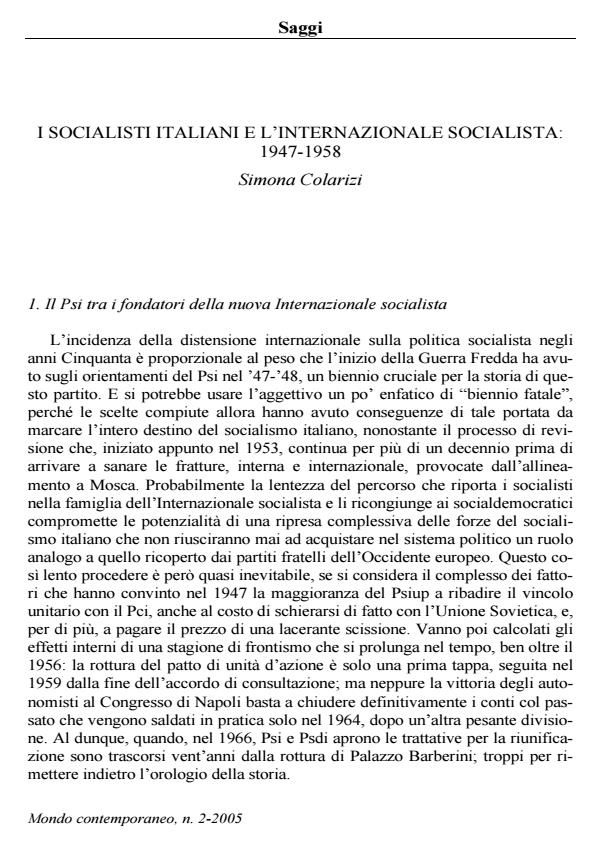I socialisti italiani e l'internazionale socialista: 1947-1958
Journal title MONDO CONTEMPORANEO
Author/s Simona Colarizi
Publishing Year 2005 Issue 2005/2
Language Italian Pages 62 P. File size 266 KB
DOI
DOI is like a bar code for intellectual property: to have more infomation
click here
Below, you can see the article first page
If you want to buy this article in PDF format, you can do it, following the instructions to buy download credits

FrancoAngeli is member of Publishers International Linking Association, Inc (PILA), a not-for-profit association which run the CrossRef service enabling links to and from online scholarly content.
The Italian Socialist Party represents an anomaly within the European family of Socialism, which, in 1947, at the beginning of the Cold War, made a clear choice for the West. On the contrary, the PSI refused to break the link with the Italian Communist Party, although this loyalty would cause for the rejection from the International Socialist Organization (COMISCO) and the rupture of the Party’s unity. Italian Socialism, divided in two parties (PSI and PSDI), became a weaker political force in the Italian political system, dominated by the Catholics (DC) and Communists’ (PCI) big organizations. At the beginning of the Fifties, and in particular in 1956, in order to regain a central role in the Italian political scene, Pietro Nenni, leader of the PSI, attempted to reach an agreement with Giuseppe Saragat, leader of the Democratic Socialist Party. Based on documents available in international archives such as the International Socialist Organization Archives in Amsterdam and the Archives of the Labour Party in London this essay analyses, step by step, the rupture with the COMISCO (1947-1949) and the attempts to rebuild the unity of the party and to re-enter the ISO (1955-1963).
Simona Colarizi, I socialisti italiani e l'internazionale socialista: 1947-1958 in "MONDO CONTEMPORANEO" 2/2005, pp , DOI: